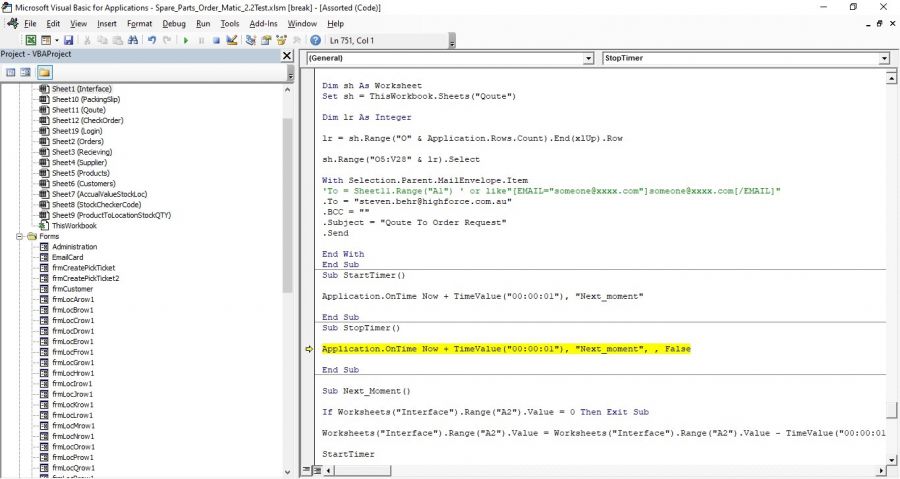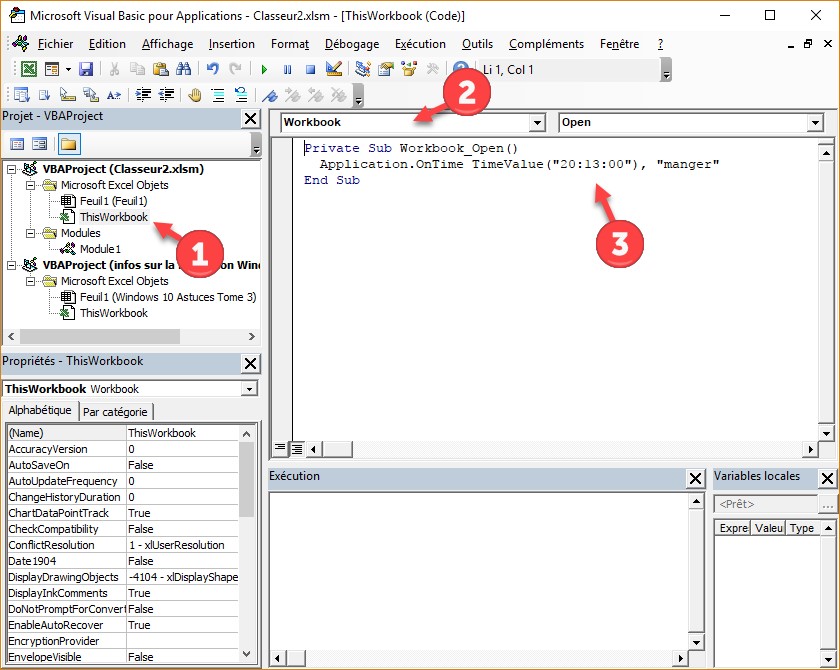
If you add a new worksheet, it’s a workbook level event.If you create a new workbook, it’s an application level event.There are different objects in Excel – such as Excel itself (to which we often refer to as the application), workbooks, worksheets, charts, etc.Įach of these objects can have various events associated with it. While the above example is a useless event, I hope it helps you understand what events really are.
Vba ontime code#
Excel instantly opens a message box that shows the address of the cell.ĭouble-click is an event, and showing the message box is what I have specified in the code whenever the double-click event takes place. Similarly, you can create VBA codes for many such events (as we will see later in this article).īelow is a short visual that shows the double-click event in action. You can use the double-click event for this. Now, whenever anyone inserts a new worksheet, this code would automatically be executed and add the year prefix to the worksheet’s name.Īnother example could be that you want to change the color of the cell when someone double-clicks on it. So you only need to write the code and place it in the correct event subroutine (this is covered later in this article).įor example, if you insert a new worksheet and you want it to have a year prefix, you can write the code for it. This means that as soon as an event occurs, and if you have specified a code for that event, that code would instantly be executed.Įxcel automatically does this as soon as it notices that an event has taken place. There are many such events in VBA, and you can create codes for these events. When you double-click on a cell, it’s an event.

When you insert a new worksheet, it’s an event. Let me first explain what is an event in VBA.Īn event is an action that can trigger the execution of the specified macro.įor example, when you open a new workbook, it’s an event.

this secondary form is there only as a host for the VBA code.

If you want this to be a background operation or a totally transparent operation, you must open this form programmatically and immediately minimize it and make it not visible. Then when your loop's single-cycle code finishes one cycle, you can decide to let it run again (by reloading the timer) or let it stop (by zeroing the timer). You can put whatever you want in the way of VBA into the OnTimer routine. 60K milliseconds later, the form's OnTimer event fires. You would put 60000 (60K) in the form-name.timer property. It is possible to use a form with a timer. The question is, what is going on in the foreground (if anything) while this procedure of yours is looping?


 0 kommentar(er)
0 kommentar(er)
